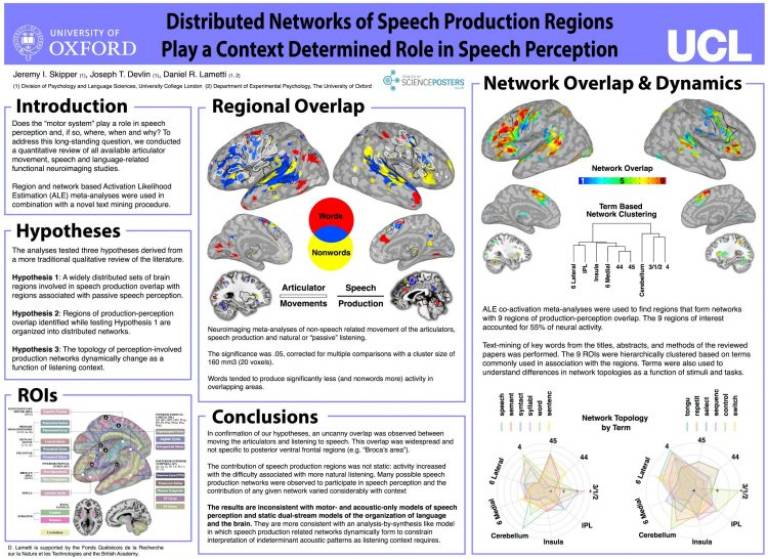Distributed networks of speech production regions play a context determined role in speech perception
Abstract

To test these hypotheses, we queried the BrainMap database (www.brainmap.org) for experiments meeting a set of common criteria (e.g. “right-handed”, “healthy”) and sets of criteria specific to each hypothesis. These queries returned peaks of functional brain activity reported in neuroimaging papers. Activation Likelihood Estimation (ALE) meta-analyses were then performed by modelling each peak as a three-dimensional probability distribution and quantitatively assessing the convergence of peaks across experiments. To test the first hypothesis, the common criteria were combined with criteria associated with speech production and speech perception (e.g. “articulator movement”, “passive listening”). Common locations of activation were then found. To test the second hypothesis, ALE co-activation meta-analyses was conducted to find which networks were associated with the previously identified production-perception regions. The variability and connectivity of the identified networks as well as their overlap was also assessed. To test the third hypothesis, automated text mining was used to create a corpus of common terms from the titles, abstracts and methods of the reviewed studies. The corpus was then used to relate changes in network topology to the stimuli and tasks used in the experiments (i.e. context).
A functional correspondence between regions involved in non-linguistic movement of the articulators, covert and overt speech production, and the perception of both nonspeech and speech sounds was observed. Cortical and subcortical regions that are more distributed than typical definitions of the “motor system” formed multiple perception-related networks. Strikingly, the topology of these networks organized around listening context.
 Close
Close

